World of Warcraft Hands-On Preview
Blizzard Entertainment's Warcraft series is going online in a big way. We're back from our visit with a souvenir or two.
Hopefully sometime soon, developer Blizzard Entertainment will launch World of Warcraft, its massively multiplayer online role-playing game set in the fantasy-themed world in which the developer's strategy games take place. Like other massively multiplayer games, World of Warcraft will let you play as a single character from a specific race (like a human or a fantasy archetype, such as an elf, a dwarf, or an orc), and then it will let you venture in to an online world to fight monsters, perform quests, and acquire treasure and experience levels with other like-minded players. This highly anticipated game is currently going through an internal test, though Blizzard recently solicited public beta testers to test the game at an undisclosed time to be determined later this year. We recently had a chance to catch a glimpse of the game in its current pre-beta state.
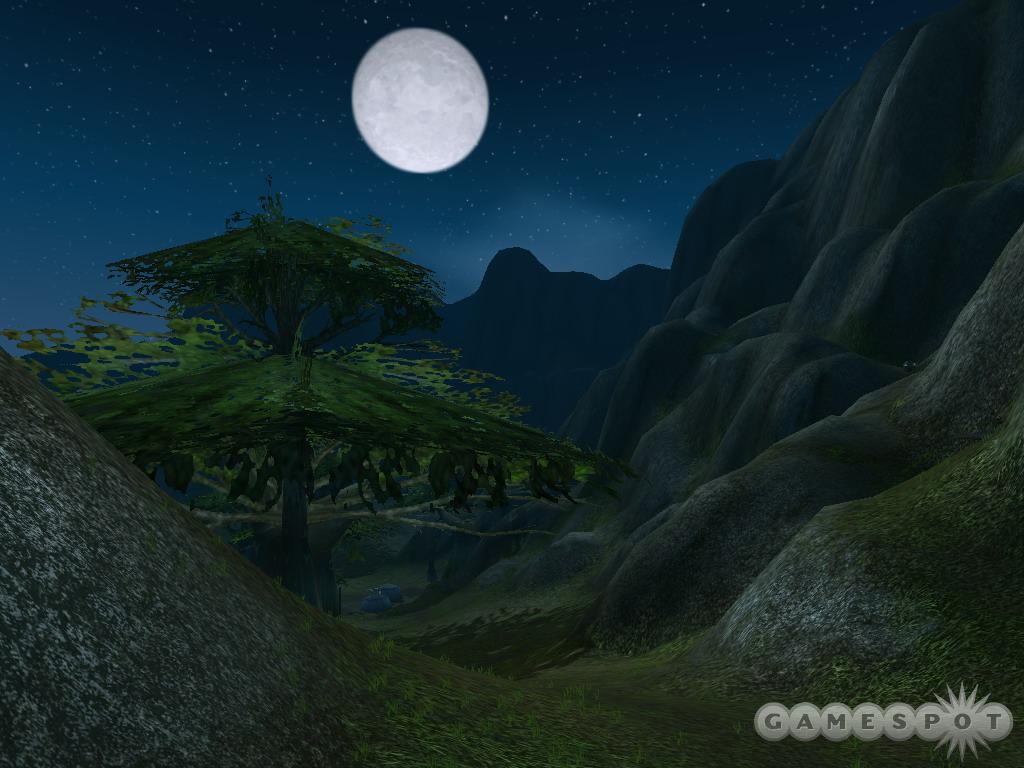
For those who may not already be familiar with the game, it may be useful to review exactly what it is and what it's about. Those who are already familiar with it may wish to skip ahead. World of Warcraft will take place in the fantasy world first featured in the Warcraft strategy series, so it will include locations like the former kingdom of the humans in Warcraft III. Since the game takes place roughly four years after the events in Warcraft III and The Frozen Throne, it will also include appearances by major characters in the Warcraft series, such as the young orc warchief Thrall, the wizard Jaina Proudmoore, and the necromancer Kel-Thuzad. Further content updates to the game will include additional areas to explore, like the frozen continent of Northrend, as well as further cameo appearances by characters like the death knight Arthas, whose last known location after The Frozen Throne was Northrend.
The game will let you play as one of eight races, four of which (humans, dwarves, night elves, and gnomes) belong to the human alliance and four of which (orcs, taurens, trolls, and undead) belong to the horde. The game will feature nine different classes, including paladins, rogues, priests, hunters, warlocks, druids, warriors, mages, and shamans. Different races will be allowed to play only certain character classes. The alliance and horde will begin the game in different parts of the world, and players belonging to opposing races may engage in controlled player-versus-player battles, though the majority of the game will be focused on "player-versus-environment" adventures. That is, most players will be going on quests and fighting monsters rather than fighting other players.
To this end, World of Warcraft will have a very highly developed quest system. Since one of the primary and ongoing goals of online RPGs like World of Warcraft is to continuously develop your character by gathering piles of gold pieces and gaining experience points for leveling-up, Blizzard is designing World of Warcraft's quests to be the most lucrative activities in the game. It's common in other online RPGs to find groups of players hunkering down in choice hunting grounds to fight the same monsters over and over again, but World of Warcraft's quests will provide far greater rewards than repetitive hunting. Quests are intended to keep players moving throughout the world so that they don't overcrowd a single area. Since Blizzard currently plans to have about 3,000 players per server, this is definitely a good thing. Fortunately, the game will also feature numerous means of quick overland transport to help you accomplish your quests, such as cross-continent boats and zeppelins. There will also be inexpensive, swift-moving animal mounts available once your character reaches level 40. Some characters will also be able to transport themselves or their companions across long distances. For instance, warlocks will be able to summon their companions to them, while mages will be able to open portals to cities. Shamans will be able to use the "spiritwalk" ability to return to their home points. However, the entire world will be seamless and will not require you to sit through any jarring load times to travel from one town to another, though you may have to put up with some loading times in certain situations, such as when venturing into dungeons.
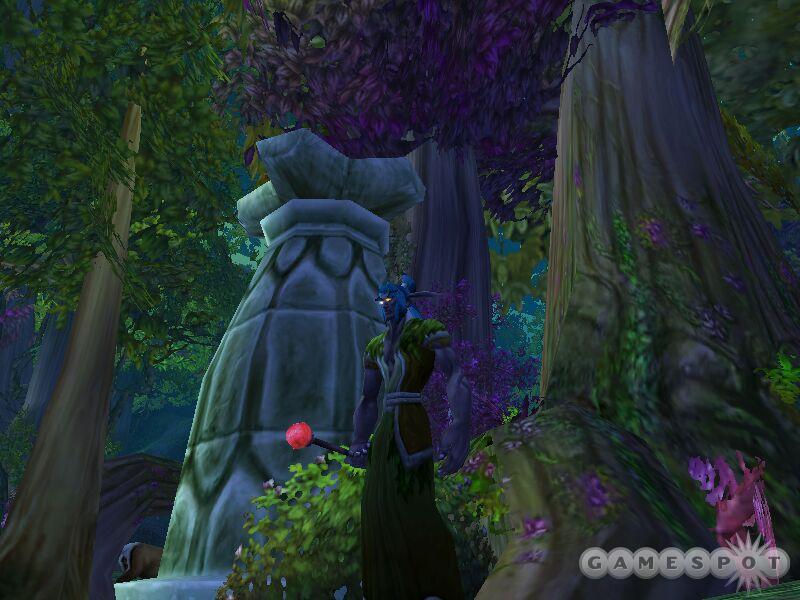
World of Warcraft is currently being tested internally by Blizzard staff and also by a small group of handpicked external testers. Interestingly, the developer is gradually rolling out certain areas for specific races to test exhaustively rather than opening the entire world at once. We visited in the midst of the orc-tauren-troll test period, so we were able to explore the rugged lands settled by the new warchief Thrall. Designer Jeff Kaplan led us through the process of creating a character, which, at this point, consisted of a very simple process that let us choose our character's race, gender, character class, and name from a single screen. All characters have five basic physical attributes, including strength, agility, stamina, intellect, and spirit, though these are preset for each race and may not be adjusted when creating a character--at least at this point in time. The current version of the game did let us customize our characters with different faces, facial markings, and skin tones, though Kaplan assured us that this basic selection of customization options was being revamped by Blizzard's art team to allow for far more options in the future.
A New World
Regardless of your character's race and class, you'll start a new game of World of Warcraft in front of a friendly character with a quest lined up for you. All quest-giving characters have a yellow exclamation mark above their heads, and all quest-givers will provide you with quests that are appropriate for your character's level and skills. World of Warcraft has a skill system that resembles that of games like EverQuest and Dark Age of Camelot. You increase your skill in weapons, magic, and crafting through repeated use, though, as Kaplan explained, you may receive skill-based quests regardless of your character's experience level. For example, you may be sent on an advanced fishing quest if your character has a fishing skill of at least 100. You'll also meet characters with grayed-out exclamation points above their heads, which indicates that they can offer you a quest once you've gained some more levels. According to Kaplan, the idea is to make sure that you're never at a loss for something to do. If you don't already have several quests stored in you quest log (which pulls up your objectives and keeps a running count of how far along you are in each), you'll know to revisit the other quest-giver to see if the higher-level quest is now active.
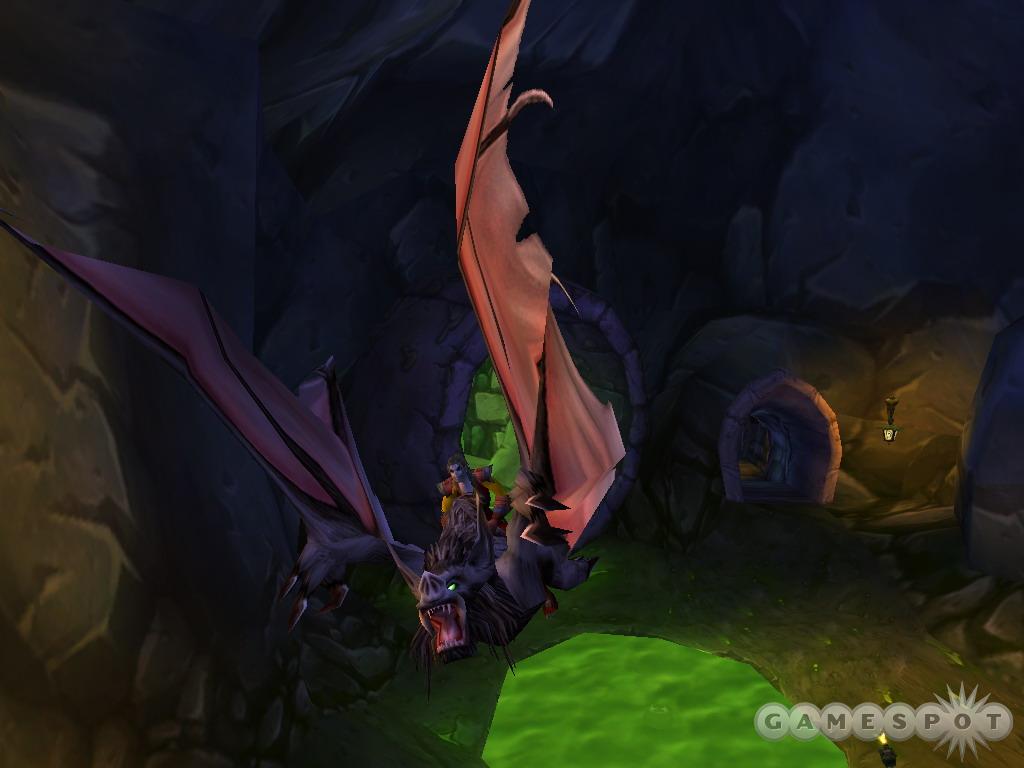
Quests will play a significant role in World of Warcraft. Since they'll not only provide you with a variety of objectives, such as exploration, the extermination of monsters, the escorting of VIP characters, and the execution of stealth missions, quests will also be extremely lucrative and will often provide you with your choice of rewards. In fact, you may be able to choose from up to six different reward items. Even if you don't need the items, the experience rewards make the quests worth accomplishing. As Kaplan explained, Blizzard decided to make quests non-repeatable. This let the developers attach substantial rewards to each quest without players clustering around the best quest-givers to perform the same quests repeatedly. Even though many quests will require you to retrieve items--such as special loot from fallen enemies--multiple copies of this special "quest loot" will be available to each character in an adventuring party on the same quest. This means that no two players will have to fight over who gets the item.
If you wish to take a break from fighting altogether, you can use World of Warcraft's trade skill system. This lets you either gather valuable resources, like rare herbs for potions, or it lets you create products, like armors and weapons. Gatherers will spend much of their time trying to locate specific resources; whether or not they can successfully recover them will depend on their skill levels. Crafters will be able to combine ingredients using a streamlined interface that will let them automatically begin production if they have enough ingredients. In either case, World of Warcraft has no "crafting failures" that cause you to waste raw materials, thus leaving you empty-handed. If your character has sufficient skill, you'll always succeed in crafting, but enterprising traders will instead want to keep track of which recipes will provide a potential skill increase. These formulas are color-coded to indicate how likely it is that you'll receive a skill increase. Gray means you won't receive a skill increase, red indicates that it's very likely you'll receive one, yellow indicates that it's less than likely that you'll receive one, and green means that you most likely won't receive one. Perhaps the most unusual trade skill in the game so far is fishing, since it requires that you use a fishing pole and lets you optionally use bait to increase your chances of catching something. You may pull up a variety of fish (which can be cooked or eaten raw to restore endurance), some junk, or even the occasional buried treasure.
Travel throughout the world will be necessary for you to acquire crafting supplies, complete epic quests, and find dungeon areas. It will also be encouraged by providing you with minor experience bonuses each time you find a new area. The game's areas are huge and clearly draw inspiration from the previous Warcraft games, like the huge night elf city, which is bounded by a single set of purple-tinted stone columns that cut through a dense forest. World of Warcraft will even feature key locations from Warcraft III, such as the now-overrun human kingdom, which has become the realm of the undead. You'll see gigantic plague cauldrons (the source of the undead scourge in Warcraft III) dotting the wheat fields, and you'll even be able to enter the ruined throne room of the slain King Terenas in the shadow of the collapsed bell tower--complete with its bloodstain on the floor from his fallen crown. If you venture even further into undead territory, you'll find the seat of the undead race's power, lined with ziggurats and halls of the dead.
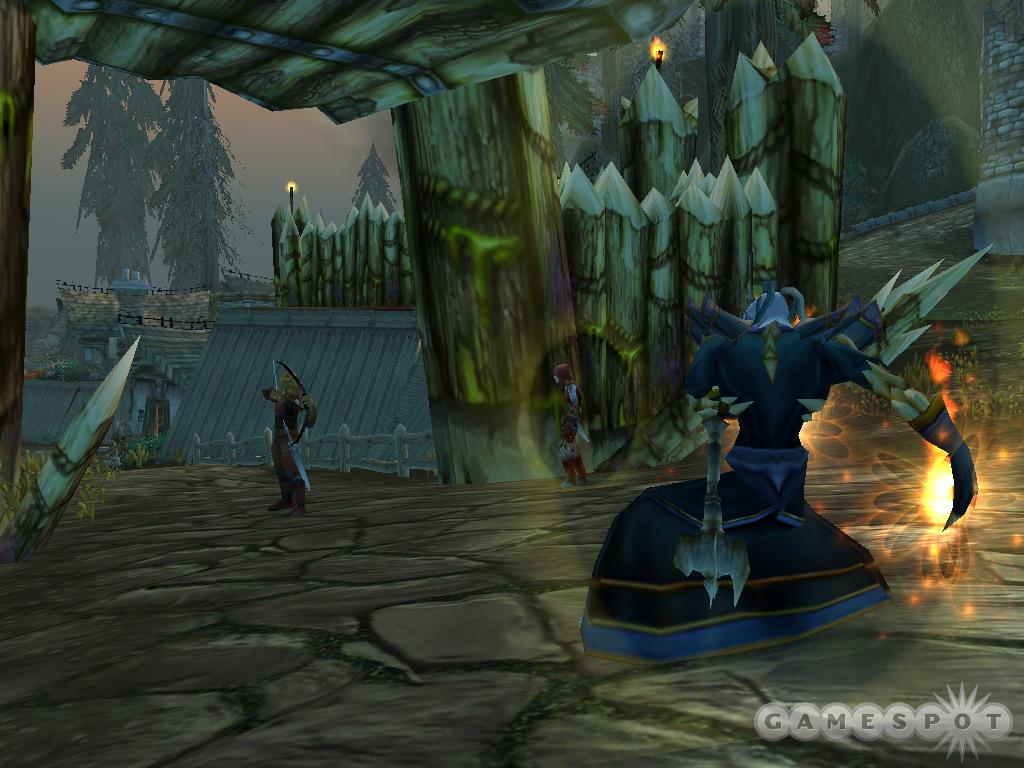
Travel will also lead you to the game's dungeons, of which there are two major kinds. There are larger "world dungeons," of which there should be about 20 at launch, and there are smaller "micro-dungeons," of which there are already more than 100-and-counting in the prerelease version of the game. Micro-dungeons will be preset, linear areas with specific quest objectives. The world dungeon we saw in action was a cave in orc territory called the Wailing Caverns, which was a set of caves inhabited by monsters that had been brought into existence by the nightmares of a character that lies asleep in the cavern. After killing off a small group of powerful monsters, you awaken this character, as well as an extremely powerful monster that you and your group must defeat. World of Warcraft's dungeons will feature "instancing." That is, venturing into a dungeon will create a copy of that dungeon specifically for you and your companions so that you don't have to worry about other players crowding your space or stealing your hard-earned dungeon loot. They'll also feature "elite" monsters that are exceptionally tough but yield far better experience and loot rewards.
On the Road
What follows here is our account of seeing the prerelease game in action and then playing it. Since we were able to only see the starting areas for the orc, tauren, and troll regions, we saw only a few character classes in action, though we were able to get a good deal of adventuring under our belt. For instance, we were able to see the warlock class, which is a spellcasting profession that resembles the necromancer class of EverQuest. Warlocks possess spells that can directly attack their enemies, though they can also cause fear in them to make them flee. Warlocks may also summon powerful magical companions, such as the imp, which acts as group support. There's also the void walker, a strong companion who works well for solo adventures, and there's the succubus, a damaging companion with a variety of special abilities that may be set to "autocast" (automatically cast by themselves where applicable), like some of the abilities in Warcraft III.
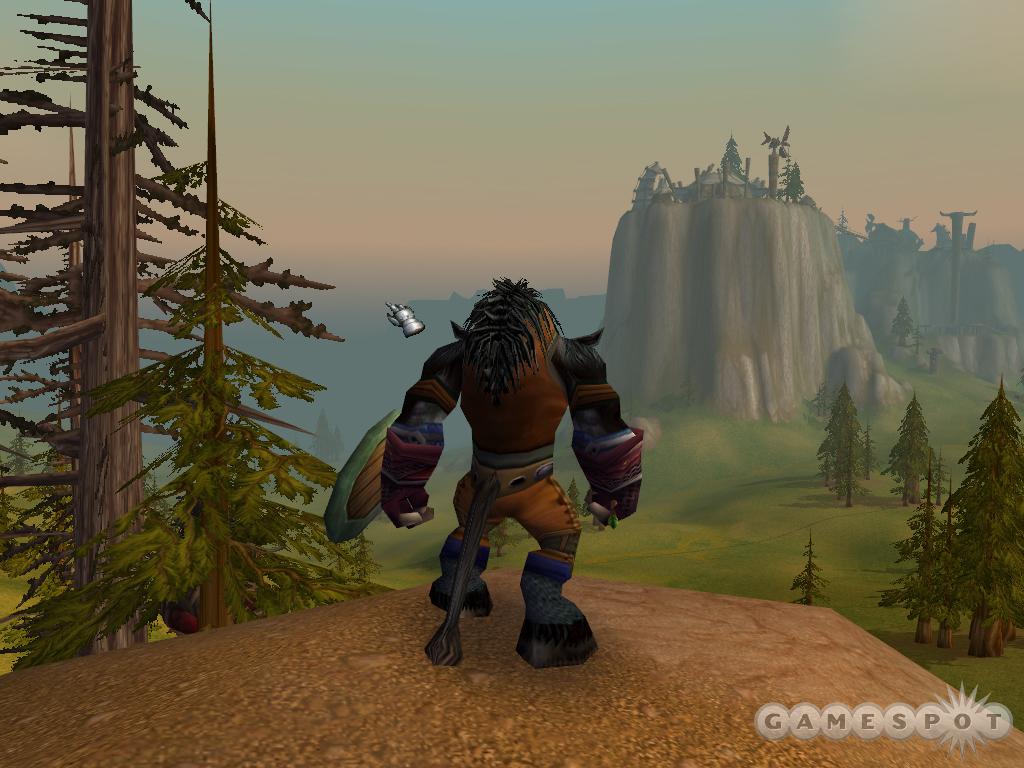
We also took a tauren shaman out for an extended play session and started out in a tauren village that had a passing resemblance to Native American architecture. There were tepees and totem poles, which were similar to the tauren totem and spirit lodge structures in Warcraft III. The tauren lands consist of rolling, grassy hillsides that border lakes and natural cave formations. The tauren tribe is led by Baine Bloodhoof, son of the tauren war hero Cairne (who formed an alliance with Thrall in Warcraft III). At this point in the game, Baine and his cohorts require new players to perform such tasks as would befit a fledgling warrior, including hunting animals for food and hides, seeking out wisdom from hermits in the hills, and driving off poachers (gnoll poachers, in this case-- the neutral monsters from Warcraft III). Each quest we undertook provided us with ample information on what was required, as well as enough information on where to look.
Fortunately, World of Warcraft's streamlined combat and magic spell system made undertaking and completing these quests as painless as possible. The game's characters currently have five combat attributes that determine their performances in battle. They are attack value, damage, attack speed, defense, and armor. As you might expect, these are affected by factors like your character's weapon skills, weapon type, and armor type. Like in other online role-playing games, combat can be initiated at a distance by using a bow or a magic spell. Although at some point, it usually involves hand-to-hand combat, which is performed by walking up to a monster and toggling your autoattack ability on. However, characters in World of Warcraft have interesting options beyond simply starting an attack and waiting for battle to end. For instance, warriors have different fighting stances that may be used, "pet" classes, like warlocks and hunters, may rely on their companions for backup, and other spellcasters, like shamans, may cast protective spells before combat, or they may cast attack spells during battle. Shamans, for instance, have numerous magic spells, some of which are borrowed from the abilities of Warcraft III's orc units, like the orc farseer, troll shadowhunter, and orc shaman units. These include healing wave, chain lightning, farsight, purge, and various totemic spells, which summon static objects that radiate magical effects within a certain radius.
Once we had a few levels under our belt, our tauren shaman was able to mercilessly pummel enemies into submission in solo adventures. We'd start by casting an enhancement spell that increased our melee damage, then we'd draw monsters out with a few lightning bolts from afar. Then we'd engage enemies in hand-to-hand combat while occasionally blasting them with the earth shock spell, which was a quickly cast, short-range incantation that packed a decent wallop. Our adversaries consisted of a wide range of monsters, including the ostrich-like plainstriders, cougars, razorback boars (a summoned monster from Warcraft III: The Frozen Throne), and gnoll poachers, to name just a few. Exploring and finding new adversaries while questing seemed worthwhile, since even hostile monsters lose interest in you and stop chasing you if you can get enough of a lead on them. Even death didn't seem like all that much of an inconvenience. When slain, you become an ethereal spirit, invisible to enemies so that you can safely retrieve your body and belongings. Once you recover your body, you can choose to return to life a short, and hopefully safe distance away. Or, you can opt to request reincarnation from a spirit healer, who will revive you for a modest experience cost. In any case, at this point in the game, you never lose your belongings when you die.
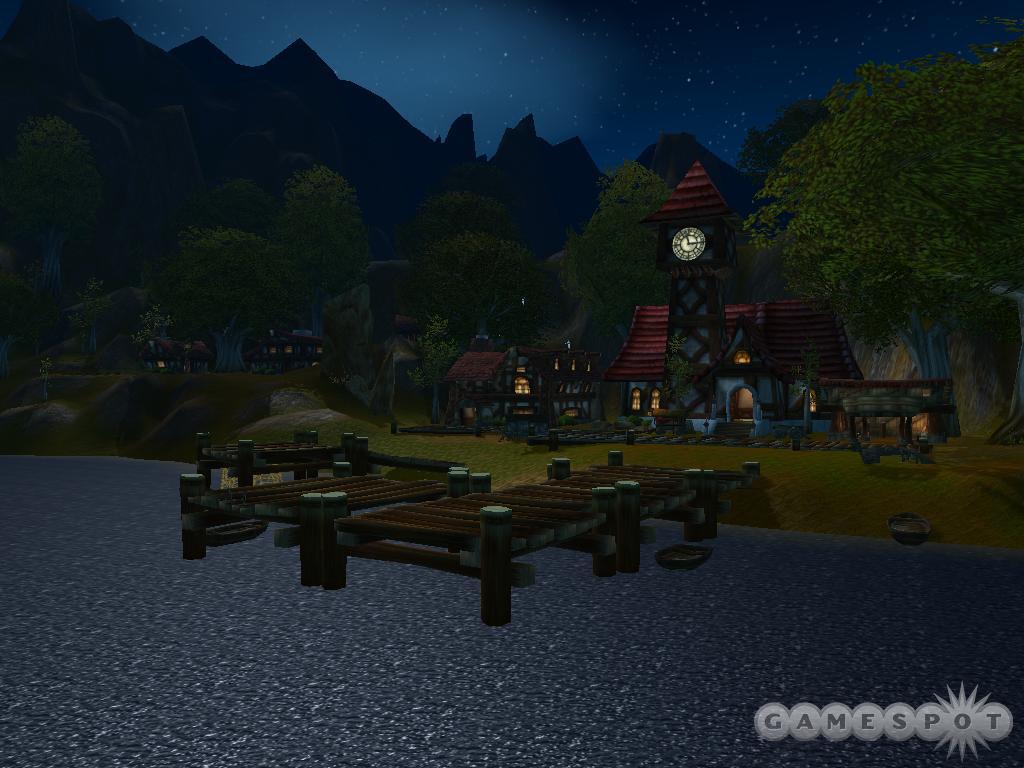
While we were unable to reach the game's currently planned level cap of 60 in our play session, we were, at least, able to gain several levels in the space of a few hours. Gaining levels in World of Warcraft currently grants your character one bonus skill point and 10 bonus "talent" points. Skill points may be used to train in miscellaneous abilities, like trade skills. Talent points can be used to purchase "talents," which are level-based abilities that resemble the "heroic feats" system of Dungeons & Dragons or the "disciplines" system of the online RPG Shadowbane. Talents are essentially minor bonuses that can add up over time, just like minor bonuses that are added to your character's basic ability scores. Characters can gain added effectiveness in battle against certain types of creatures (like undead or animals); they can specialize in certain schools of magic; or they can specialize with certain weapon types to provide themselves with attack damage bonuses.
Even at this early stage, World of Warcraft seems to possess a great deal of depth while, at the same time, seeming very accessible. It also seems to offer plenty of interesting choices for developing your characters, as well as numerous viable ways to do so. In fact, though the game seems to draw upon other massively multiplayer games for inspiration, World of Warcraft also seems to draw upon Blizzard's own addictive hack-and-slash series Diablo. The game is still in a closed-test state, though Blizzard recently solicited testers for an open beta test that will begin on an as yet undetermined date. World of Warcraft will launch on a different (and presumably much later) undetermined date, which will hopefully be later this year.
Got a news tip or want to contact us directly? Email news@gamespot.com
Join the conversation